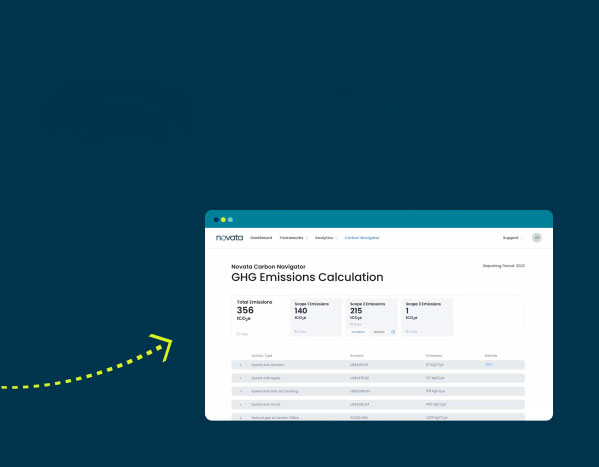In today’s corporate world, companies are under increasing pressure to demonstrate their commitment to environmental, social, and governance (ESG) standards. At the same time, they must maintain their competitive advantage by relying on proprietary metrics that can give them an edge over their rivals. This balancing act can be challenging, but it is essential for companies to understand that embracing ESG standards, improving reporting transparency, and leveraging benchmarking and analytics can enhance their long-term profitability and sustainability. By striking a balance between proprietary metrics and ESG standards, companies can create a winning combination that benefits both their bottom line and society as a whole.
In support of these goals, Novata and Oliver Wyman published a report exploring how European private equity firms are navigating changing expectations around how ESG data should be incorporated into investment decisions. The report surveyed 20 top European private equity firms, representing about 30% of AUM in Europe. According to the findings, private equity firms are tracking ESG performance across their portfolios, but the way they do so varies in terms of the metrics selected and definitions used.
The report shows that General Partners (GPs) use a number of different sources in order to identify and adopt ESG metrics across the investment lifecycle. This is a trend we’ve witnessed firsthand from our earliest days of collaborating with GPs to inform Novata’s software and education offering. Among these sources, GPs display a marked preference for utilizing proprietary or internal metrics throughout the investment lifecycle. For instance, during the fundraising stage, 65% of GPs surveyed used internal metrics and scorecards compared to 50% who selected metrics from frameworks and standards.
The approach of using internal metrics and scorecards could originate from a perceived necessity to encapsulate organization-specific nuances that third-party frameworks may overlook. However, we suspect there’s an additional element at play here. Novata has spent hundreds of hours reviewing and mapping metrics from private market participants to its metric library, which curates the most relevant metrics from leading ESG frameworks and regulations.The majority of the metrics assessed by Novata are often influenced by established frameworks and cross-functional teams. Their origins are likely historical spreadsheets and repurposed limited partner (LP) questionnaires. Prior to the mainstream adoption of ESG technology platforms, these were two main sources of competitive intelligence.
Utilizing metrics that resemble but aren’t quite those from leading frameworks incurs a kind of process debt for GPs that is poised to worsen if neglected. There are three main impacts:
- The misalignment of scorecards and metrics with established frameworks hinders the comparability of data for LPs, regulators, and other market participants.
- An overreliance on internal metrics imposes a significant responsibility on in-house teams to maintain updated metric libraries in accordance with industry best practices and as new findings refine the most pivotal metrics.
- The need for additional resourcing to maintain internal metrics raises a few questions. Are internal metrics genuinely relevant? Do internal metrics help identify risks, opportunities, or impact? Are they decision-useful only to the organization or could they be used to communicate with a wider audience? If the answer to these questions is generally no, GPs may want to reconsider the effort.
The impacts of prioritizing mostly internal metrics demonstrate the delicate balance GPs need to strike between the demand for specificity and the challenges associated with maintenance and convergence in the continually evolving landscape of ESG metric selection. However, we see signs that market participants are marching toward convergence in the selection of ESG metrics. For instance, at Novata, we help GPs streamline the metrics they collect by focusing on two key aspects: the scale of metric requests and their alignment with industry best practices, frameworks, or regulations. For these GPs, there’s an understanding that while broadening the scope of internal metrics they monitor, they must also efficiently manage the growing number of information requests from LPs and adhere to regulatory requirements. Rather than add to the reporting requirements of portfolio companies, we see more prioritization taking place, and a focus on the most material metrics.
For a deeper dive, read the full Novata & Oliver Wyman report, “Turning ESG Data into a Competitive Edge for Private Equity.” To find out how your organization can improve your ESG metric selection process, prepare for regulatory requirements, and more, reach out to services@novata.com.






